 
|
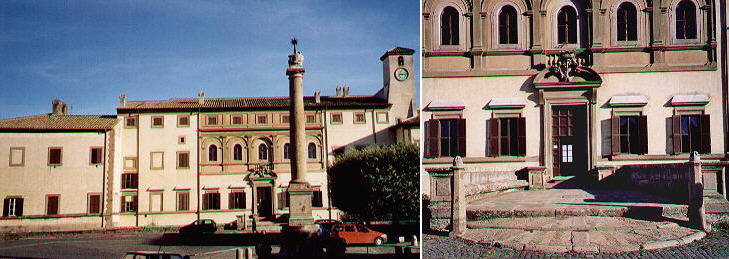 | ||
The palace, maybe designed by il Vignola, was modified in the late XVIIth century after Oriolo was acquired in 1671 by the Altieri, the
family of Pope Clemens X (1670-76). It is a complex building which seen from different angles appears as town palace, a villa, a fortress and
even a farm. A bridge linked the apartments of the Altieri with a large park. The Altieri decorated a long gallery (today a museum) with the portraits of 256 popes
(I have to say it is a rather boring visit).
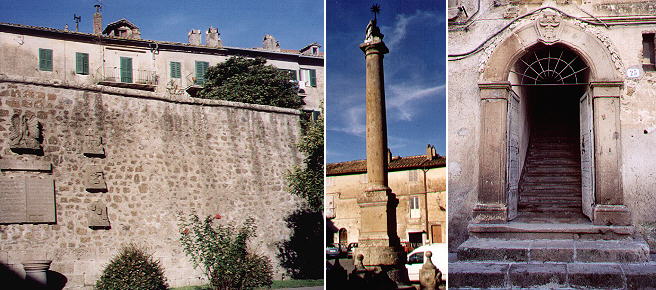 | ||
Oriolo retains in part its old walls, but not its gates. The fountain was erected by the Santa Croce, but the Altieri added their heraldic star on its top and on the little piers which surround the fountain (see the image used as background for this page). Although initially all the inhabitants of Oriolo were farmers or servants of the Santa Croce, and they lived in identical small houses, over time some families acquired a more important status which shows up in a few larger buildings.
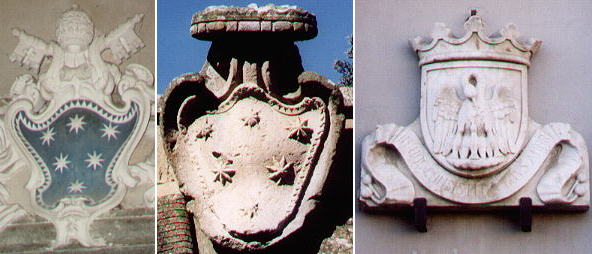 | ||
The coats of arms of the Altieri or their heraldic stars are everywhere in Oriolo. The coat of arms of Oriolo, however, is still faithful to the founders and it shows a pelican, a symbol of the Santa Croce (see S. Maria in Publicolis the Santacroce church near Piazza Giudia in Rome).
Capranica
Capranica is located at the confluence of two little streams which have deeply cut the tufaceous rocks of a small hill with two peaks. Capranica can be accessed only from one side. Half a mile outside the gate of Capranica there is a church (Madonna del Piano) designed by il Vignola in the second half of the XVIth. The gate was built in the same period and it leads to Borgo, one of the two peaks of the hill.
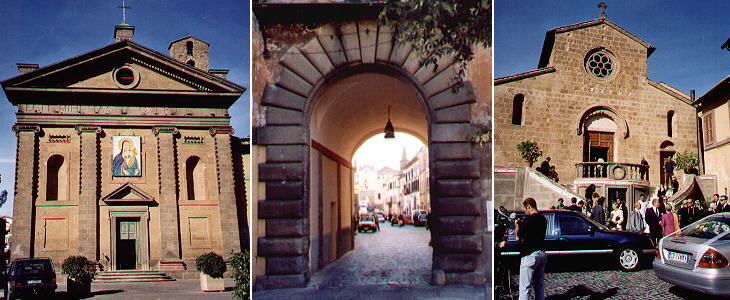 | ||
Borgo has an interesting medieval church (S. Francesco), but when I approached the church my interest was on something other than its architecture: I first saw a long black car used for funerals and then another car decorated for a wedding: although funny things occur in my country, Capranica did not seem to me the right place to test an innovative liturgy mixing funerals with weddings. When I got closer to the scene I realized I had come across the shooting of a movie.
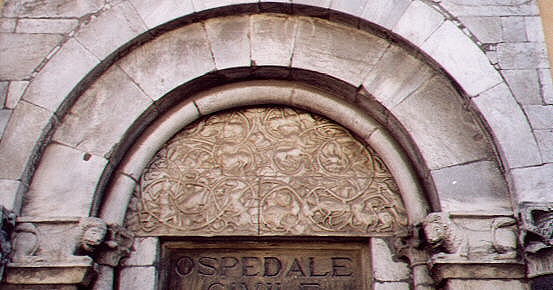 | ||
The medieval (XIIth century) entrance to the hospital has a relief showing men and animals framed by vine-branches; the meaning of the relief is obscure: experts know much more about the iconography of the Greeks and the Romans, than of that of the Middle Ages.
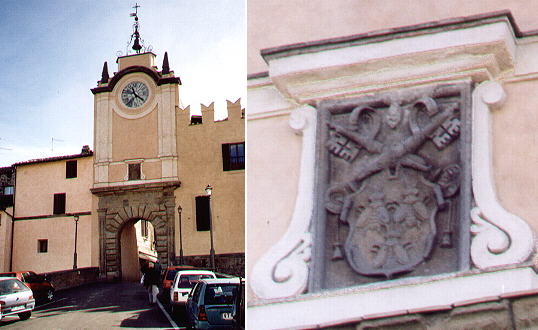 | ||
The access to Castello (castle), the second peak of the hill, is protected by another gate, largely restored by Urbanus VIII (1623-44) and as usual decorated with his coat of arms.
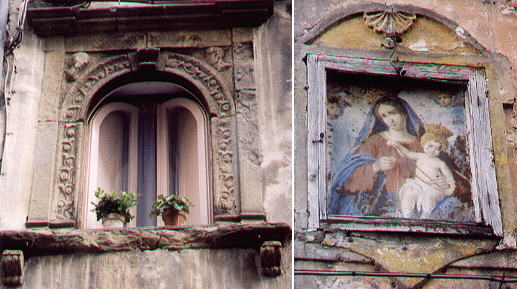 | ||
Castello is the oldest part of Capranica and its being so inaccessible once was an advantage, but today is a minus. You see very few people around and many houses are closed. It is a pity because the narrow streets are very evocative.
From Civitavecchia to Civita Castellana - other pages:
Civitavecchia, Allumiere and Tolfa
Sutri and Monterosi
Nepi and Castel Sant'Elia
Civita Castellana
some other walks:
Walks with Ferdinand Gregorovius in the Roman countryside
In and about Viterbo
A walk to Porta Furba
Via Appia Antica from Cecilia Metella to Torre in Selci
Via Appia Antica from Torre in Selci to Frattocchie
See my Home Page on Baroque Rome or my Home Page on Rome in the footsteps of an XVIIIth century traveller
All images © 1999 - 2003 by Roberto Piperno. Write to romapip@quipo.it
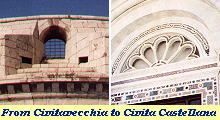 Oriolo Romano and Capranica
Oriolo Romano and Capranica